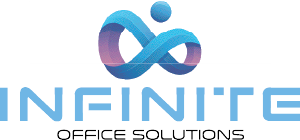Branding
To brand your goods, simply email your artwork to [email protected] If you have a preferred printing method, feel free to include that information, and we’ll guide you through the process.
Choosing the right decoration method for your workwear or merchandise can be overwhelming with so many options available. To help you make an informed decision, we’ve outlined the various methods and key considerations. If you're still unsure, our friendly team is here to assist and provide expert advice.
Embroidery
Embroidery is a durable and professional decoration method, commonly used for workwear due to its toughness and refined look. The process involves stitching a design onto a garment using various coloured threads. The garment is placed in a frame, with a supporting fabric underneath for stability, and then fed into a machine that stitches the design with precision.
Before the machine can start, designs must be digitized so the machine can understand the stitch setup. The machine works at speeds of up to 1,000 stitches per minute, with finishing touches done manually by an expert, such as removing backing and cleaning up threads.
Screen Print / Round
Screen printing is perfect for large, vibrant designs, using layers of ink applied one colour at a time, with drying between each layer to ensure durability. It’s commonly used on textiles like t-shirts and tote bags, and for curved items like mugs, water bottles, and pens with a screen round.
This method works well on non-woven fabrics, polyester, nylon, and cotton. For textile items, you can use up to 10 colours, though each additional colour adds to the cost. For non-textiles, the limit is 4 colours, and for round items, only 1 colour can be used.
Transfer Print
Digital transfer print is fixed to the garment using a heat press. This option is more suited to designs with multiple colours and achieved via the process of printing your design onto the vinyl which is then subsequently cut to shape and applied to the garment. This option works well for multi-colour prints including photographs. Due to the nature of the printing, this application method is best suited to one-off or small print runs.
Direct To Film
Direct-to-Film (DTF) is a modern digital printing method where designs are printed onto a specialized heat-transfer film, which is then applied to fabric using heat and pressure. This technique ensures vibrant, high-resolution prints with excellent durability and colourfastness. DTF works on a variety of fabrics, including cotton, polyester, and blends, and is ideal for intricate, colourful designs.
If you need detailed, colourful prints that work on both light and dark fabrics, DTF offers accuracy and longevity, making it a popular choice for custom apparel and fabric-based products.
Direct To Garment
Direct to Garment (DTG) printing involves applying ink directly onto a garment using a specialized printer. The garment is treated with a fixing agent to help the ink absorb and remain durable. DTG is ideal for small orders with complex, full-colour designs, such as t-shirts and hoodies, as it requires minimal setup time and provides quick results. It’s perfect for intricate customizations and allows for a wide range of colours. However, lighter fabrics show colours more vividly, and darker fabrics may need a white ink under base for optimal results.
